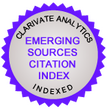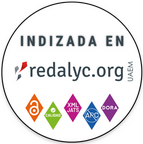What does Bardin say that authors do not show? Study of Brazilian scientific productions from 1997 to 2015
DOI:
https://doi.org/10.13058/raep.2017.v18n2.478Keywords:
Content Analysis, Bardin, Brazilian journals, BibliometricsAbstract
This study presents the analysis of articles published in Brazilian periodicals between 1997 and 2015 that used the content analysis method by author Laurence Bardin. That is an exploratory methodology with a longitudinal temporal perspective, employing the documentary, quantitative and qualitative approaches to research. Fifty-two papers published in the Portuguese language, available on the Scientific Periodicals Electronic Library (SPELL) and SCIELO (Scientific Electronic Library Online) journal databases, were analyzed. Atlas.ti and Microsoft Office Excel software were used for organization and tabulation. Those works were analyzed using the bibliography method, quantifying, describing and predicting the process of written communication according to the Bradford Law, Lotka Law and Zipf Laws (GUEDES, 2012). In addition, they were qualitatively explored according to the application of the method, and classified as partial, minimum or total. The results show that there has been an improvement in the articles published in recent years from the perspective of application and description, considering the three phases: pre-analysis, material exploration and treatment of results. Some studies use content analysis neglecting key steps, others only mention the method in the methodology, but do not apply it in practice. The analyses indicated that 39 (75%) of the articles did not clarify the steps defined by Bardin, in addition, 24 papers used an auxiliary analytical method in conjunction with the content analysis.
Downloads
Downloads
Published
How to Cite
Issue
Section
License
By publishing a manuscript in the journal Administração: Ensino e Pesquisa (RAEP), the authors declare that the work is of their exclusive authorship and therefore assume full responsibility for its content. The authors grant RAEP a non-exclusive rights license to use the work in the following ways:
(1) Sell and / or distribute the work in hard copies or electronic format.
(2) Distribute parts of the work as a whole to promote the journal through the internet and other digital and printed media.
(3) Record and reproduce the work in any format, including digital media.
Authors and readers are permitted to share the material, use it in classes, for presentations and also for other purposes, and to create new knowledge based on any RAEP publication, as long as the due credit is attributed to the original work and the respective author(s), through citations, references, and other means.
The journal adopts preventive measures to identify plagiarism using software designed for this purpose.
RAEP does not charge authors for the article submission nor for the publishing of approved articles.
In line with the journal's policies, each published article will be given a Creative Commons CC-BY 4.0 license.










